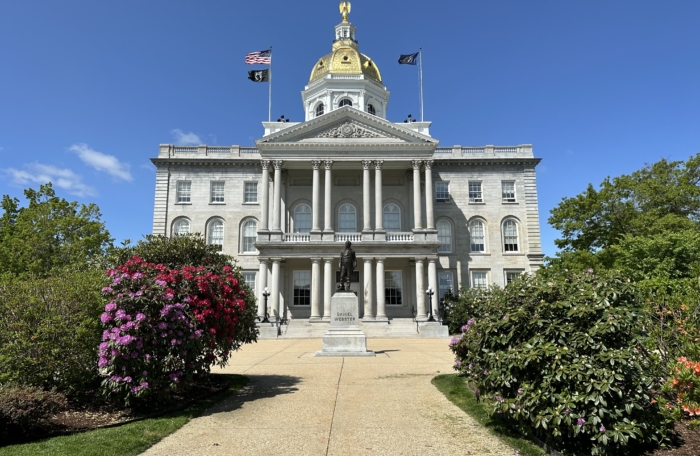State appropriations grew substantially this week as legislators passed a $15.2 billion state budget for fiscal years 2024–25. The budget appropriates $6.25 billion in the General and Education Trust Funds.
Crafted by the Senate Finance Committee from a House version that passed earlier in the session, the budget raises total spending by more than 12% from the $13.5 billion FY 2022–23 budget.
The governor’s proposed FY 24–25 budget spent $15.7 billion and the House’s spent $15.9 billion.
In General Fund and Education Trust Fund spending (the portion financed by state taxes), the FY 24–25 budget appropriates $6.25 billion, a 16% increase from the FY 22–23 budget ($5.39 billion).
By contrast, legislators cut General Fund and Education Trust Fund appropriations by 3.1% between the FY 20–21 and FY 22–23 budgets. Total spending between those budgets grew by a little more than 2%, from $13.2 billion to $13.5 billion.
So the FY 24–25 budget represents a substantial increase in budgeted state appropriations. It spends about $566 million more in the General Fund and nearly $299 million more in the Education Trust Fund than the previous budget did. In total, the budget allocates nearly $3.8 billion in the General Fund and close to $2.46 billion in the Education Trust Fund.
The governor’s version had $6.29 billion in approved spending in both funds, while the House’s had $6.42 billion.
Across all the line items, the Senate cut nearly $50 million in approved General Fund and Education Trust Fund spending from the House’s version. After adjustments and lapses are accounted for, the final budget spends $163.7 million less than the House and $33 million less than Gov. Sununu in General and Education Trust Funds.
|
Combined General and Education Trust Funds |
| Senate (FY 24–25) |
$6.25 billion |
| House (FY 24–25) |
$6.42 billion |
| Governor (FY 24–25) |
$6.29 billion |
| Current Budget (FY 22–23) |
$5.39 billion |
One-time and off-budget spending
All versions made additional, off-budget appropriations in the current fiscal year. The final budget spends about $80.2 million more than the House and $133.4 million more than the governor proposed in FY 2023.
These current-year allocations make the difference in total spending between the Senate’s and the House’s budgets much closer than the FY 24–25 numbers would suggest.
The Senate shifted several spending items to FY 23 that the House appropriated for FY 24–25, making it appear that the Senate made larger cuts to the House’s budget. For example, the Senate shifted $1.2 million in moving and fit-up costs to FY 23, as well as $3.6 million in building maintenance funds and $9.2 million in episodic treatment payments in education.
The increases in FY 23 spending were fueled by increased revenues. The budget pegs FY 23 revenue at $3.17 billion, which is $486 million higher than legislators had estimated when writing the FY 23 budget.
As we pointed out here, legislators used higher than anticipated revenues to approve hundreds of millions of dollars in additional FY 22–23 spending.
Based on budgeted appropriations, the FY 24–25 budget is about 16% larger than its predecessor. But when actual spending is tallied at the end of the current budget, the difference will be much smaller. That’s because legislators spent most of the big budget surpluses accumulated in the last two years.
Higher revenues
The budget projects that state revenues over the biennium will be $121.1 million higher than the House’s estimated revenues and $59 million higher than the governor’s.
The budget’s $6.359 billion in projected revenues are $868.7 million higher than the previous budget’s projected revenues, which explains how legislators were able to raise spending so much without raising taxes.
Some of this extra revenue goes to savings. The final budget ends the biennium with $231.9 million in the Rainy Day Fund, while the House set aside $200.7 million and the governor saved $341.3 million in the fund.
Education funding
Each budget proposal changed the state’s adequate education grant formula. The final budget uses the formula offered by the Senate, which was a compromise between the governor’s and the House’s numbers.
Per-pupil adequate education grants are set at $4,100 under the Senate’s version, compared to $4,000 in the House’s version and $4,700 in the governor’s draft.
This represents a $313 increase (8.3%) in base adequacy spending from FY 22–23 ($3,786.66).
In addition, the Senate’s budget increases funding for differential aid. It includes $2,300 for each student eligible for free or reduced-price meals, $2,100 for each student receiving special education services, and $800 for each student who is an English language learner.
In the FY 22–23 budget, those levels were $1,893 for students eligible for free or reduced-price meals, $2,037 for students receiving special education services, and $740 for English language learners.
The following table shows the per-pupil adequacy spending within each proposed budget compared to adequacy spending under the FY 22–23 budget.
|
Senate
(FY 24–25) |
House
(FY 24–25) |
Governor
(FY 24–25) |
Current Budget
(FY 22–23) |
| Base |
$4,100 |
$4,000 |
$4,700 |
$3,786.66 |
| Free/Reduced Meals |
$2,300 |
$2,100 |
$2,500 |
$1,893.32 |
| Special Education |
$2,100 |
$2,100 |
$2,079.89 |
$2,037.11 |
| English Learner |
$800 |
$1,000 |
$756.43 |
$740.87 |
| 3rd Grade Reading Score* |
N/A |
N/A |
N/A |
$740.87 |
*This appropriation was for each 3rd grade pupil whose reading score on the state assessment was below proficiency. It has been cut from all three versions of the FY 24–25 budget.
State aid to public charter schools also gets a boost. The per-pupil adequate education grant for charter school students goes from $3,561 to $4,100, and the additional per-pupil grant (given because charter schools don’t receive local property tax revenue) goes from $3,411 to $4,900, for a combined per-pupil total of $9,000.
In total, the FY 24–25 budget increases state education spending by $169 million in the biennium and a projected $1 billion over 10 years.
The Senate restored about $187.6 million to the Education Trust Fund that the House had moved to the General Fund (though it would’ve continued to be spent on education).
Medicaid
The House budget provided for a two-year extension of the Granite Health Care Advantage Program, the state’s expanded Medicaid program. The Senate’s proposal, adopted in the final budget, extends this program for seven years.
In FY 2022, with the federal government funding 90% of the program, the state was responsible for paying the remaining 10% of the Granite Health Care Advantage Program, or $56.2 million. If this total stays relatively steady, this Medicaid program is expected to cost the state roughly $393 million over the next seven years.
The budget increases Medicaid provider payments by $134 million, a $110 million increase from the governor’s proposal.
Interest & Dividends Tax
Despite a razor-thin majority in the House, Republicans were able to include an accelerated repeal of the Interest & Dividends Tax in the budget. The tax was scheduled to phase out by 1 percentage point a year, ending with its elimination in 2027. The FY 24–25 budget pushed the elimination date up to January 1, 2025.
Overall, the FY 24–25 budget ratchets officially budgeted state appropriations up by 16%, which sets a new baseline for state spending, without raising taxes. This was made possible by the relatively steady flood of revenues, particularly from business taxes. Thus, to maintain this new, higher level of spending, the state will need those revenues to solidify into a new baseline too. If they trend downward for more than a brief period, the next Legislature could face some tough choices.










